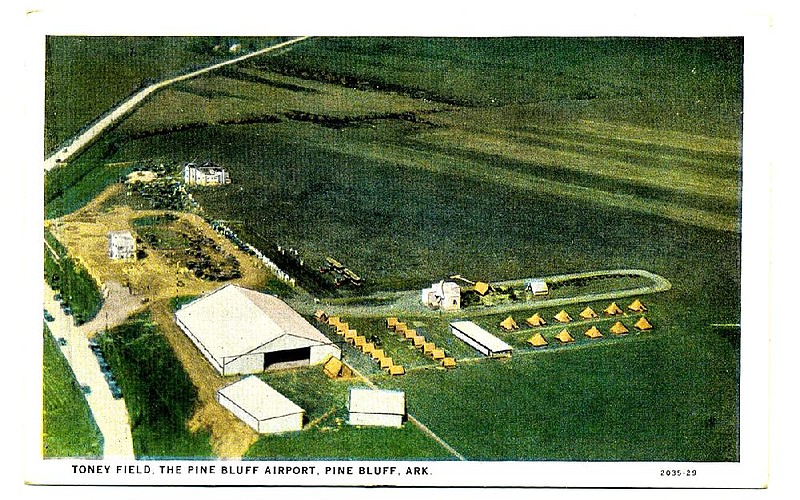According to the Encyclopedia of Arkansas, the Pine Bluff School of Aviation, as it was originally known, was opened as a U.S. Army Air Corps detachment on March 22, 1941, during World War II. Construction began in late November of that year with a combination of $200,000 in municipal bond money and a $107,320 grant from President Franklin D. Roosevelt's Depression-era Works Progress Administration.
The airfield was used as a primary training facility for air cadets from 1941 until it was decommissioned in 1944.
The field was named for John McGavock Grider of Mississippi County, who according to the state encyclopedia was a fighter pilot who was killed during a mission over Armentières, France, during World War I.
Felix G. Smart, who was a pilot and member of the National Aeronautical Association, utilized his connections to make the U.S. Army Air Corps aware of the planned airfield, says the encyclopedia. Brigadier General Gerald C. Brant, commanding officer of the Army Air Corps training facility at Randolph Field, Texas, arrived with a small staff to inspect the site for a new military Army Air Corps training facility and gave his approval.
The airfield was constructed in just four months in a cotton field a few miles south of Pine Bluff, and consisted of administrative buildings, hangars, barracks, a mess hall and a control tower.
Initially, the Encyclopedia of Arkansas says, the training fleet consisted of just six Fairchild PT-19 single-prop, two-seater airplanes for a class of 50 cadets getting 10 weeks of flight training in March 1941. The school later expanded the fleet to 275 aircraft and admitted a total of about 12,000 pilot trainees, some 9,000 of whom graduated during its 3½ years of operation.
After World War II, the airfield was returned to the City of Pine Bluff by the Civilian Aeronautics Authority in 1947 and the city operated the airfield until 1957, when the Pine Bluff Aviation Commission was established to manage and maintain it as a general aviation airport for southeast Arkansas.
The airfield still has four of the original five round-top hangars that were constructed when the site was used as a primary training base, says Pine Bluff Municipal Airport Manager Doug Hale. It also still has one of the original barracks that was constructed to house pilot trainees.
"One of the hangars burned in 1957," Hale said. "It was used to store cotton, and after the fire it was torn down and the terminal was built over its location in 1960."
Hale said in addition to hangars and airplanes, the airport is also the site of an array of weather monitors owned by the National Weather Service.
"When [TV meteorologist] Melinda Mayo tells you it's 73 degrees in Pine Bluff," he said, gesturing toward the array, next to the taxiway at the north end of the airport near one of the original hangars, "it's 73 degrees right there. That's another way that airports serve their communities."

